Meeting the Himba people of Namibia
Inviting myself into people's homes to photograph them is not something I usually ever do. Spending time with the Himba people in the North of Namibia proved to be very challenging.
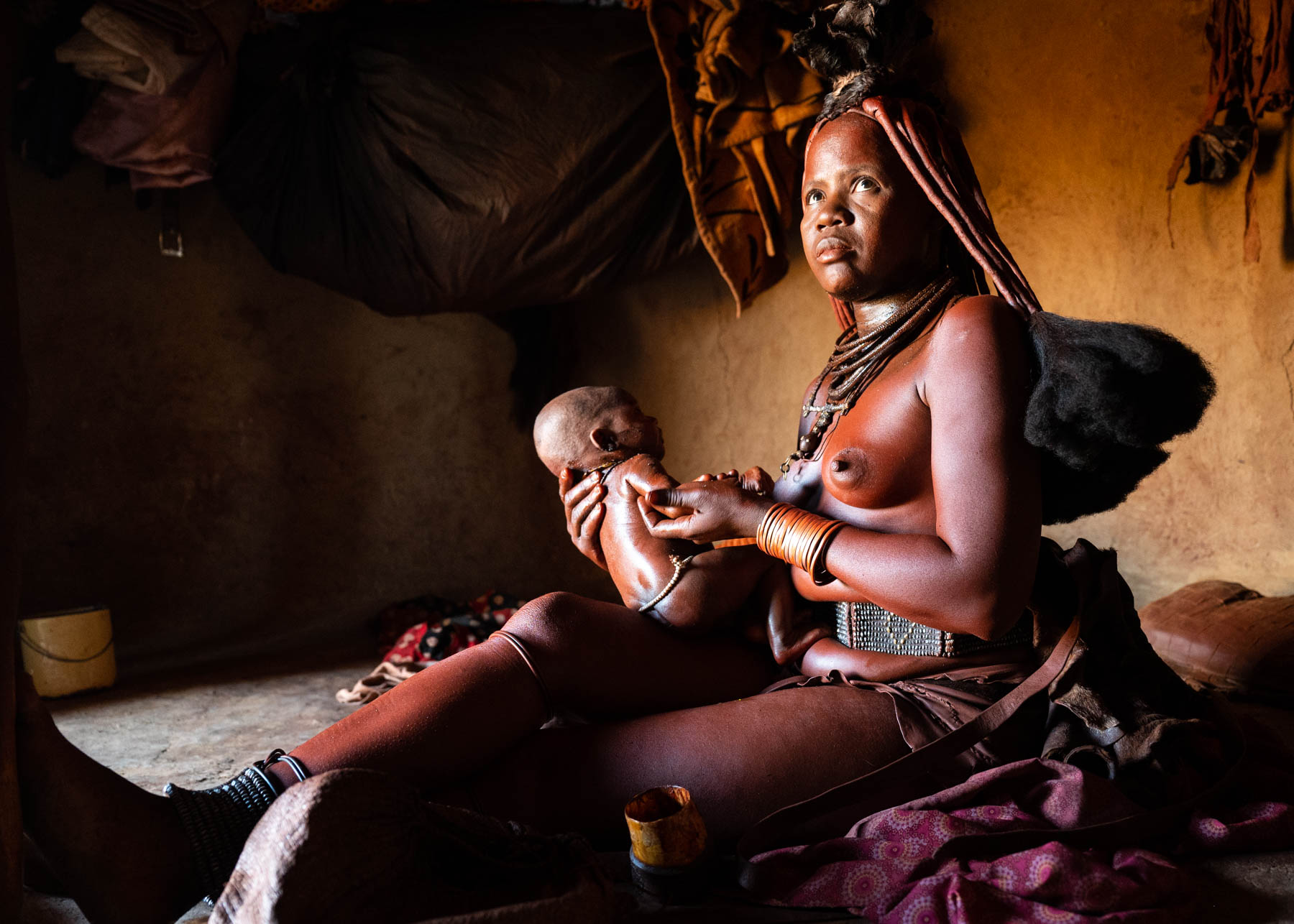
Early morning. A young mother has not yet finished applying the ochre that gives Himba women their usual red colour. I was invited into the hut by the local guide, and while I was definitely uncomfortable being there, I couldn't stop myself from making use of the fantastic morning light.
A part of an organized trip to Namibia about which I definitely had mixed feelings was meeting and photographing the Himba people in the north of the country. Not only because I don't usually photograph people, but interacting with a culture that is so foreign and with people with whom I share no common words was a completely new experience.
The Himba inhabit Namibia and Angola and lead a very traditional way of life. With a population around 50,000 (Namibia and Angola) in a country of 2.5 million, the Himba lead a life that is extremely foreign even to most Namibians.
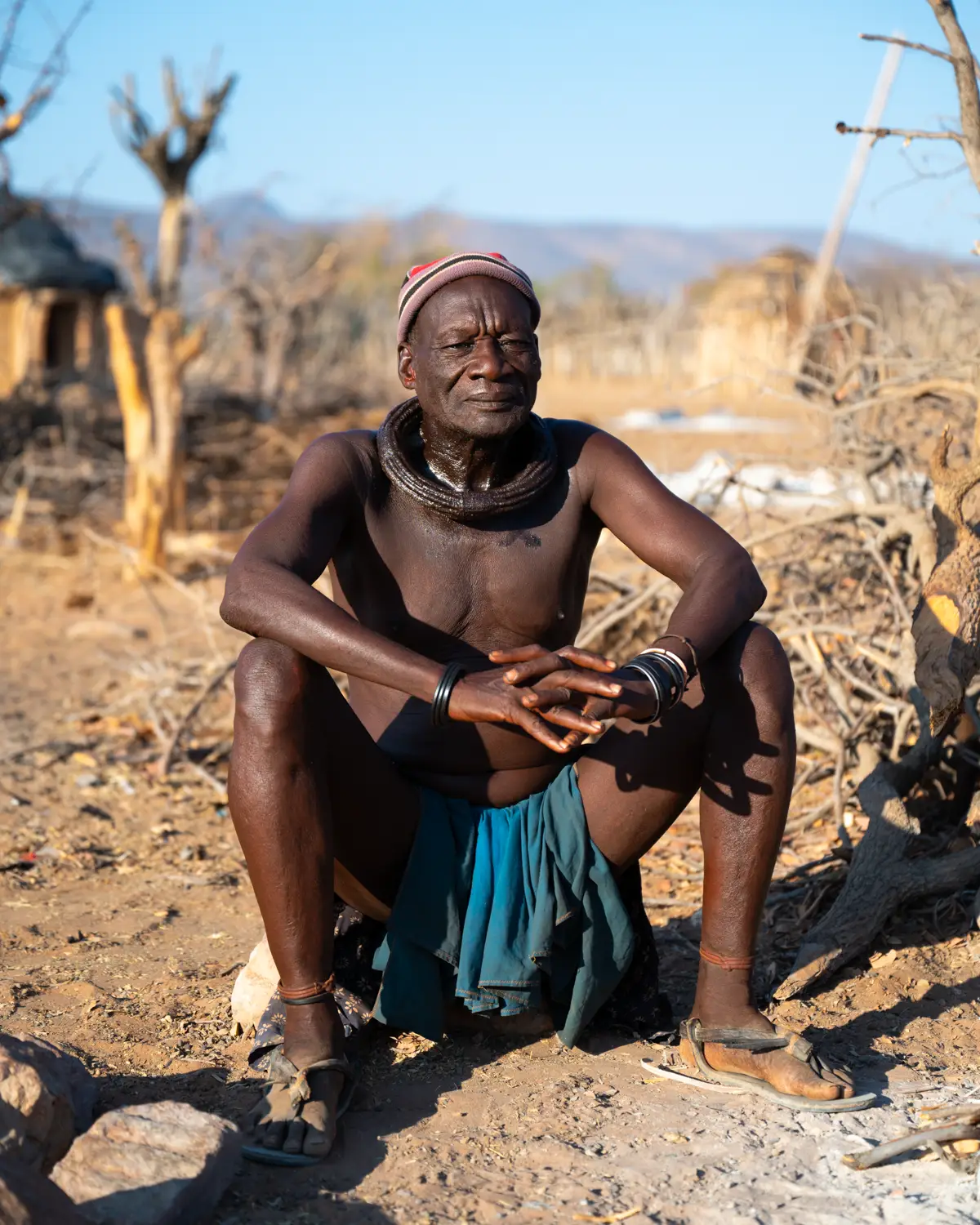
The chief, one of the only men present in the village as the others are out grazing with their cattle.
In the first village of two that we visited that day, the local chief explained that more and more Himba youth choose to leave their villages and move to the towns and cities, ultimately making the switch to a less traditional lifestyle, while the elderly Himba still desire to hang on to their way of life. In a way, the Himba remind me of the Amish people living in the Northeastern United States.
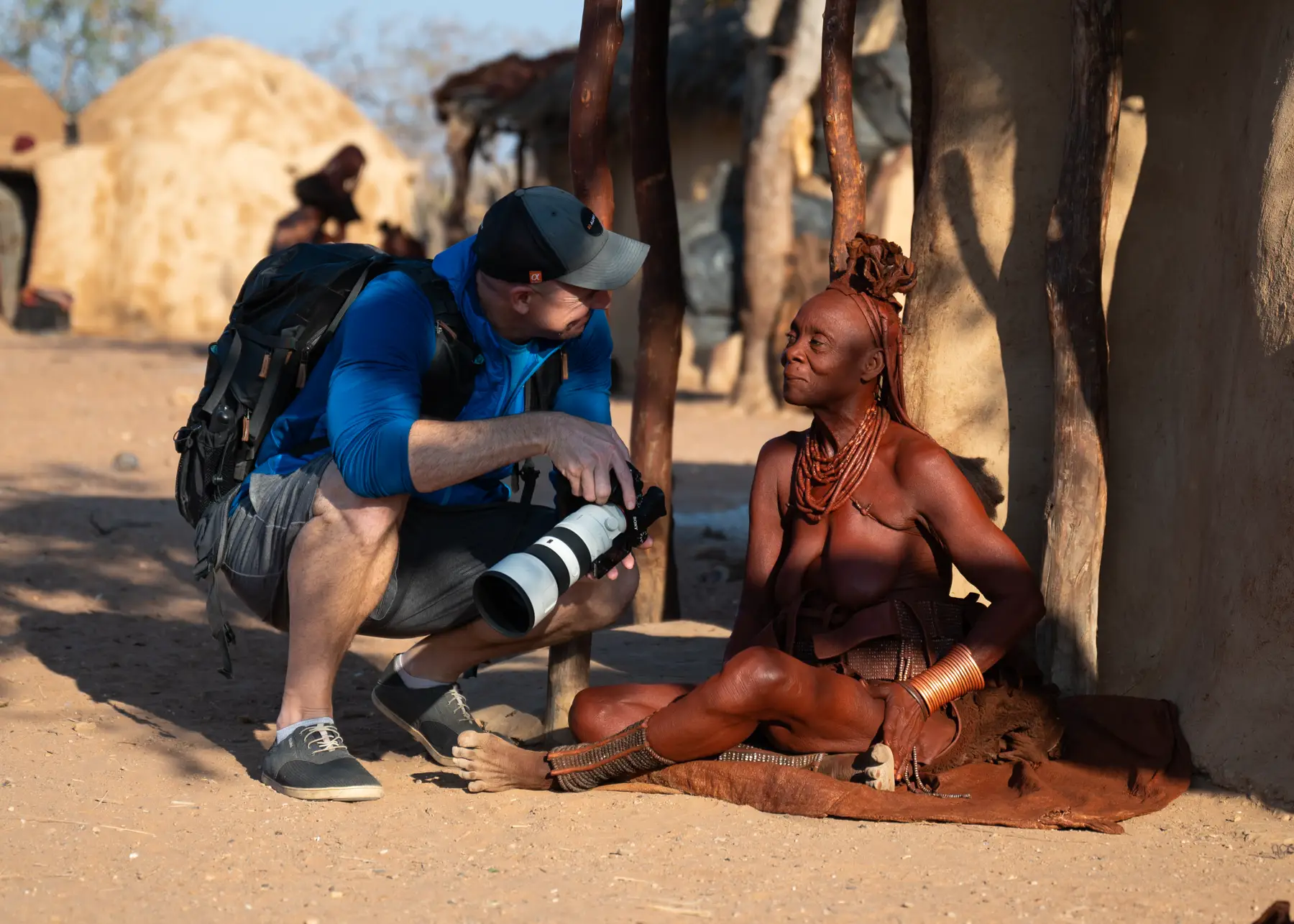
A good way to break barriers is to photograph people and show them the pictures on the back of the camera. Colby Brown, who has visited the Himba tribes multiple times over several trips to Namibia, is showing us the ropes.
The comparatively modern Namibian town of Opuwo is merely a few dozen kilometres away, and is surrounded by many Himba villages; a shocking contrast. It's still not uncommon to come across people from the tribes in town, out and about, running errands.
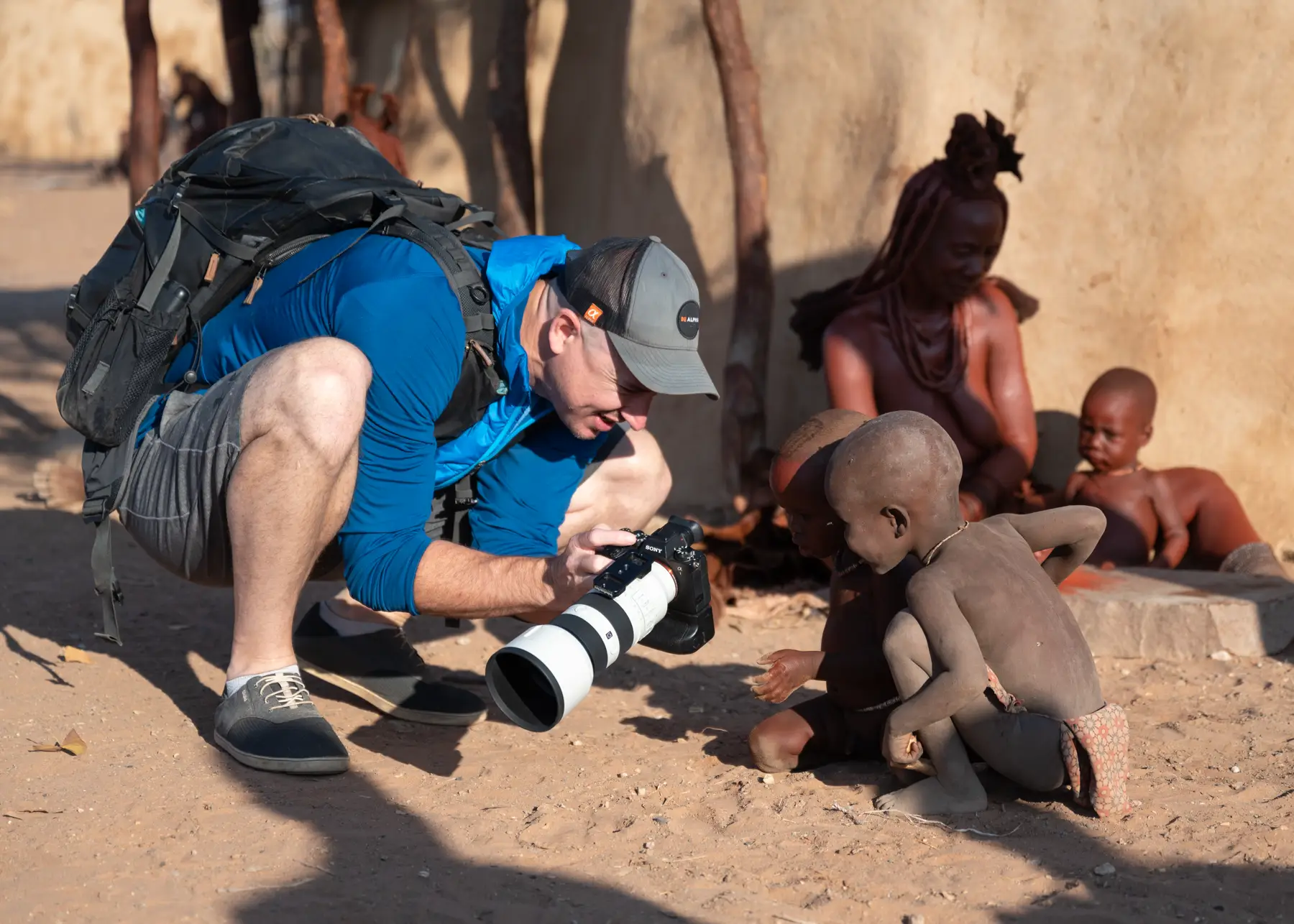
Children particularly enjoy seeing photos of themselves, in a place where even mirrors are rare.
Tours to Himba villages are led by Himba people (who speak the language) that have moved to towns and cities and that have studied foreign languages. Tourism is a way for the Himba to sustain an increasingly difficult way of life, where more and more goods may only be obtained for cash.
Interestingly, despite the apparent poverty, the Himba have surprising sources of wealth. The elders of many tribes often own herds of thousands of heads of cattle that can be worth millions of US dollars. Agriculture provides a way for the Himba to not only feed themselves but to do business.
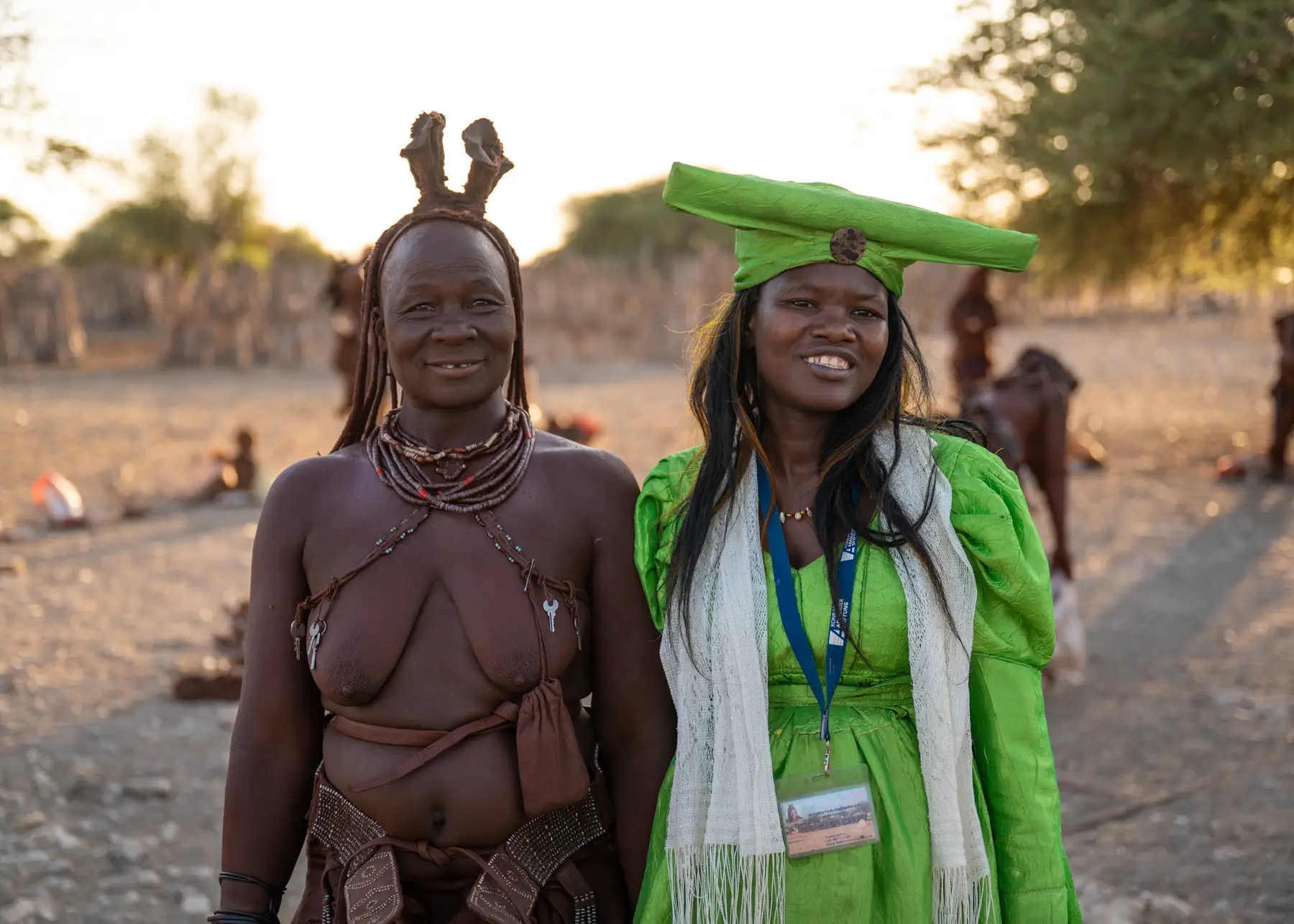
Those two women are cousins, but both chose very different directions in life.
The tour to the second of two villages that day was led by a woman who had moved to the town of Opuwo but had family in the tribe. The familiarity made for a very different vibe. The women were very eager to meet us and were definitely excited to show us around the village.
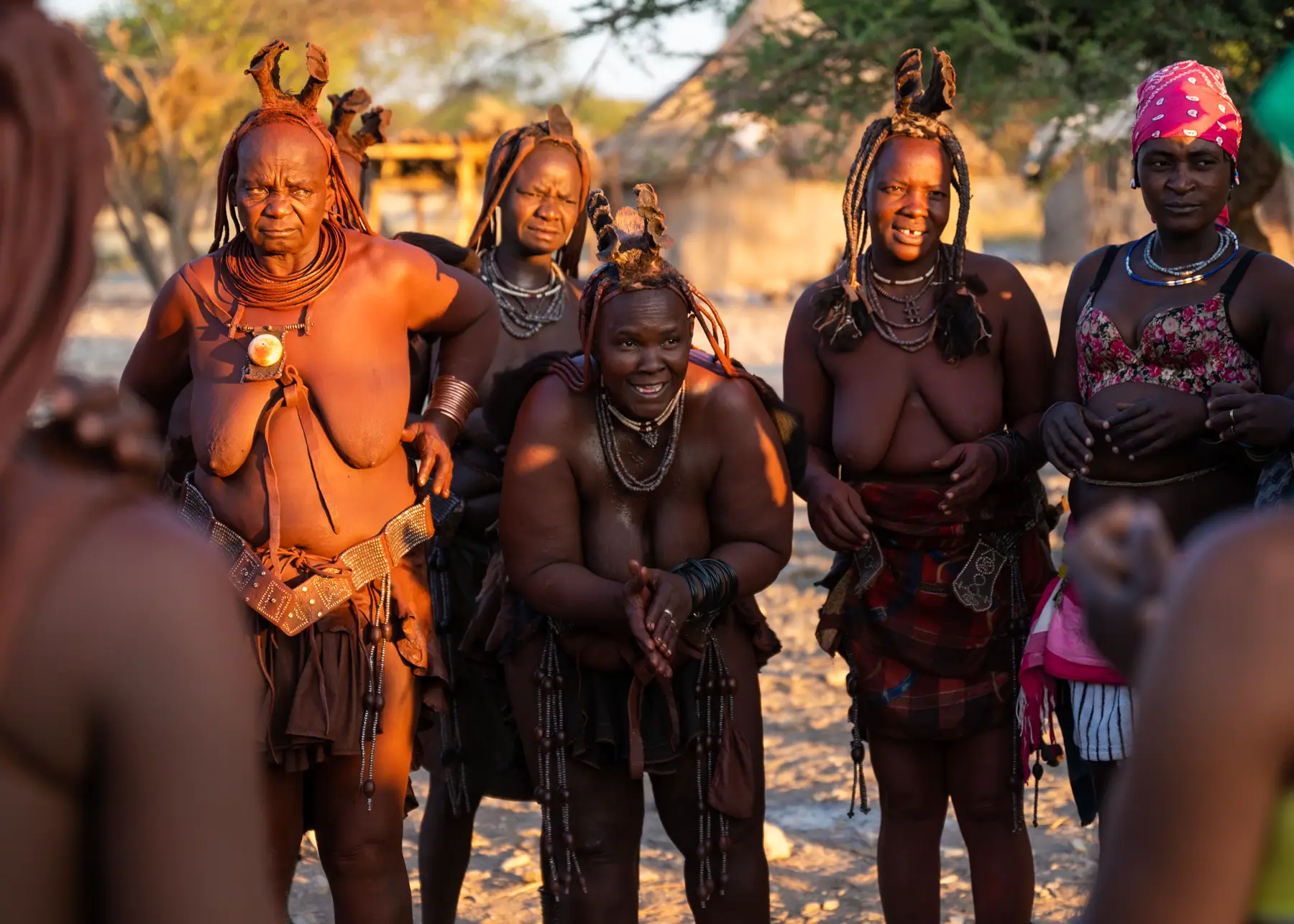
The women displayed wonderful hospitality and performed a dance for us, their guests.
One thing I noticed is that several women in that village had opted to cover their breasts more than the usual. And when darkness set in, many even pulled out their cell phones!
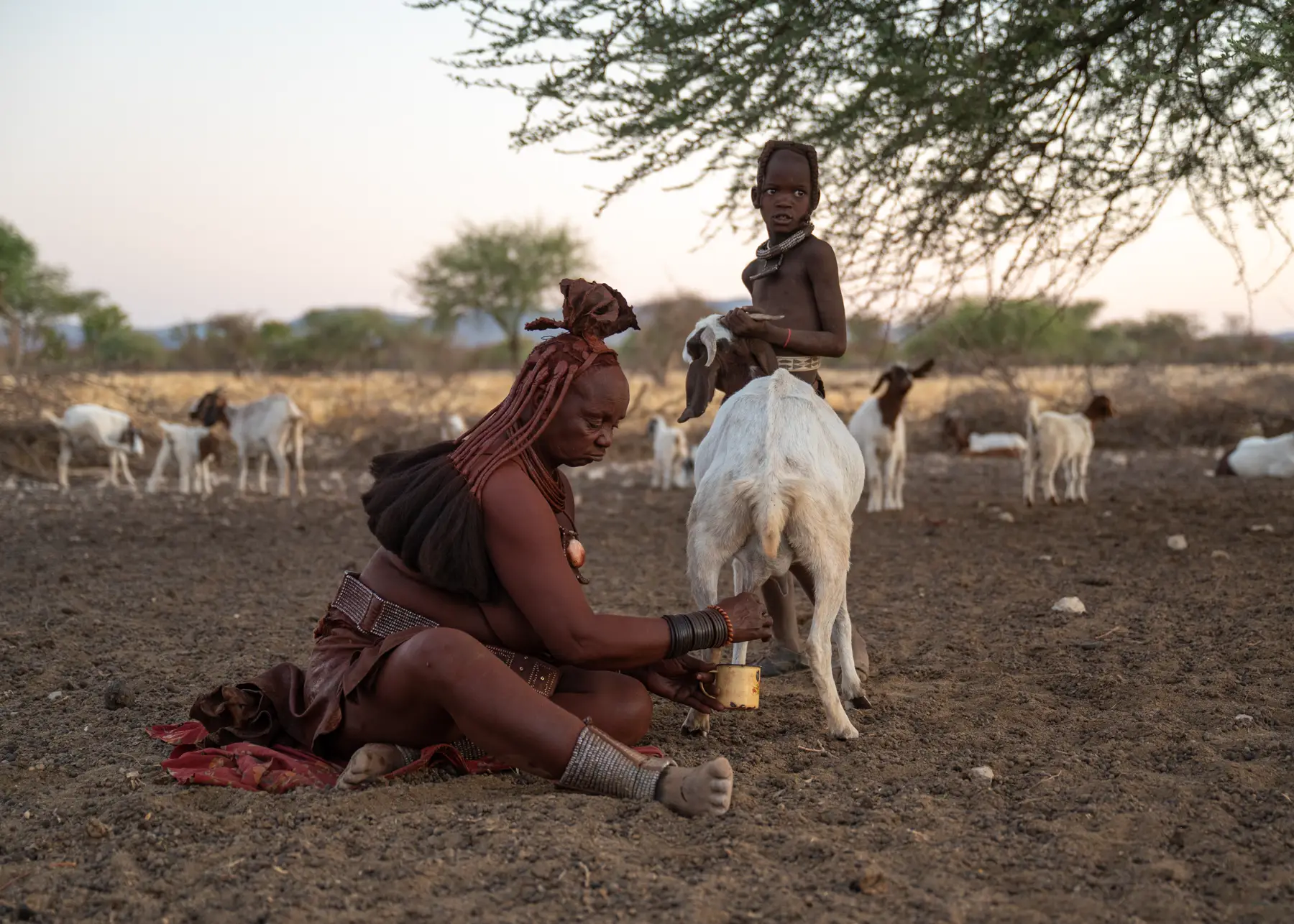
“I'm gonna milk this goat, come watch!”
During our time in this village, we observed the sun set and the changing light. The dry air of the area, hardly able to hold in much residual heat, quickly chilled, and soon the fires went up.
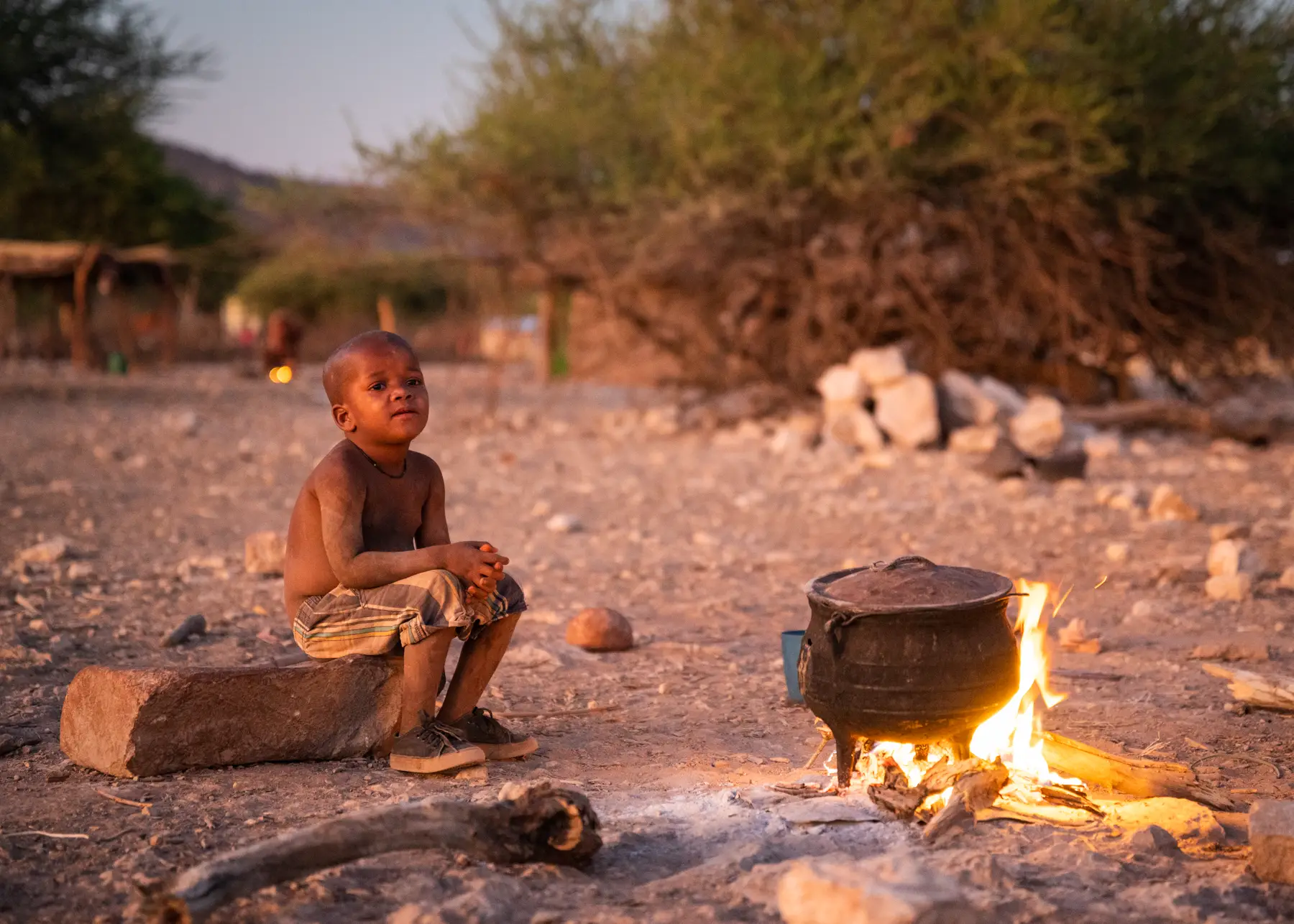
When nights falls, so do the temperatures, and sometimes the only warm place is by the fire.
The day was definitely a great learning opportunity. Seeing a truly different culture living with very few of the comforts of modern life can definitely remind us how adaptable humans can be.
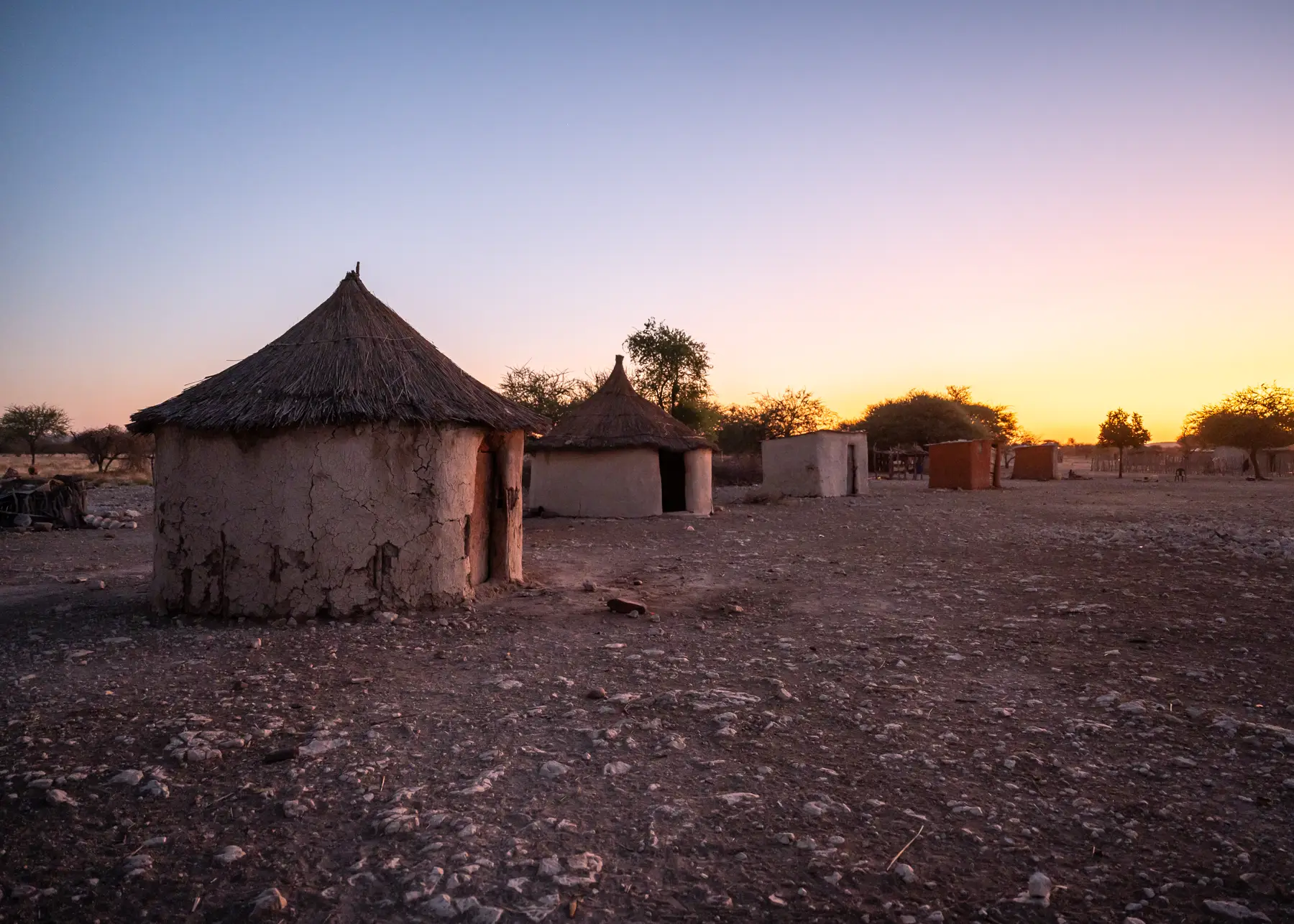
photography people travel Published